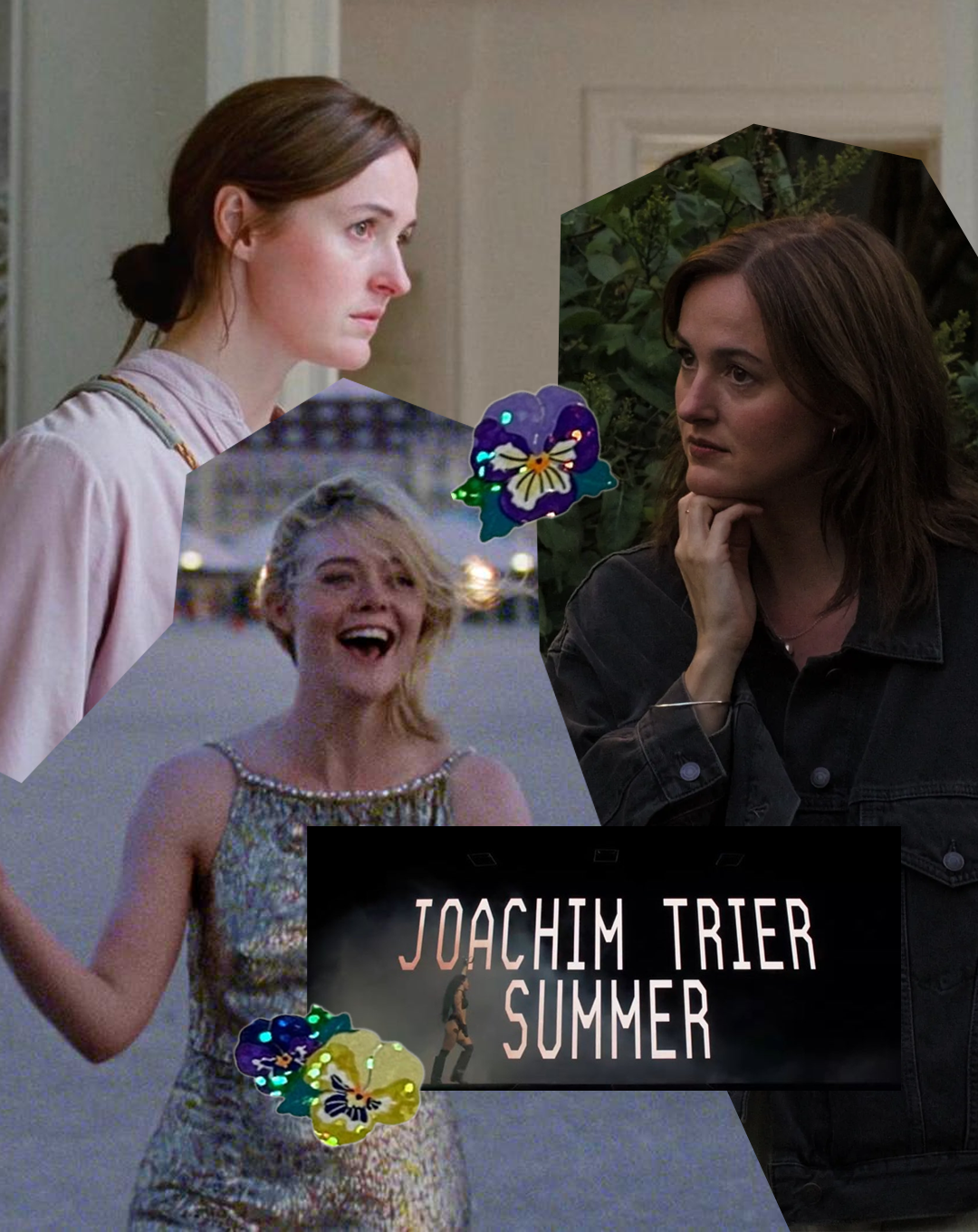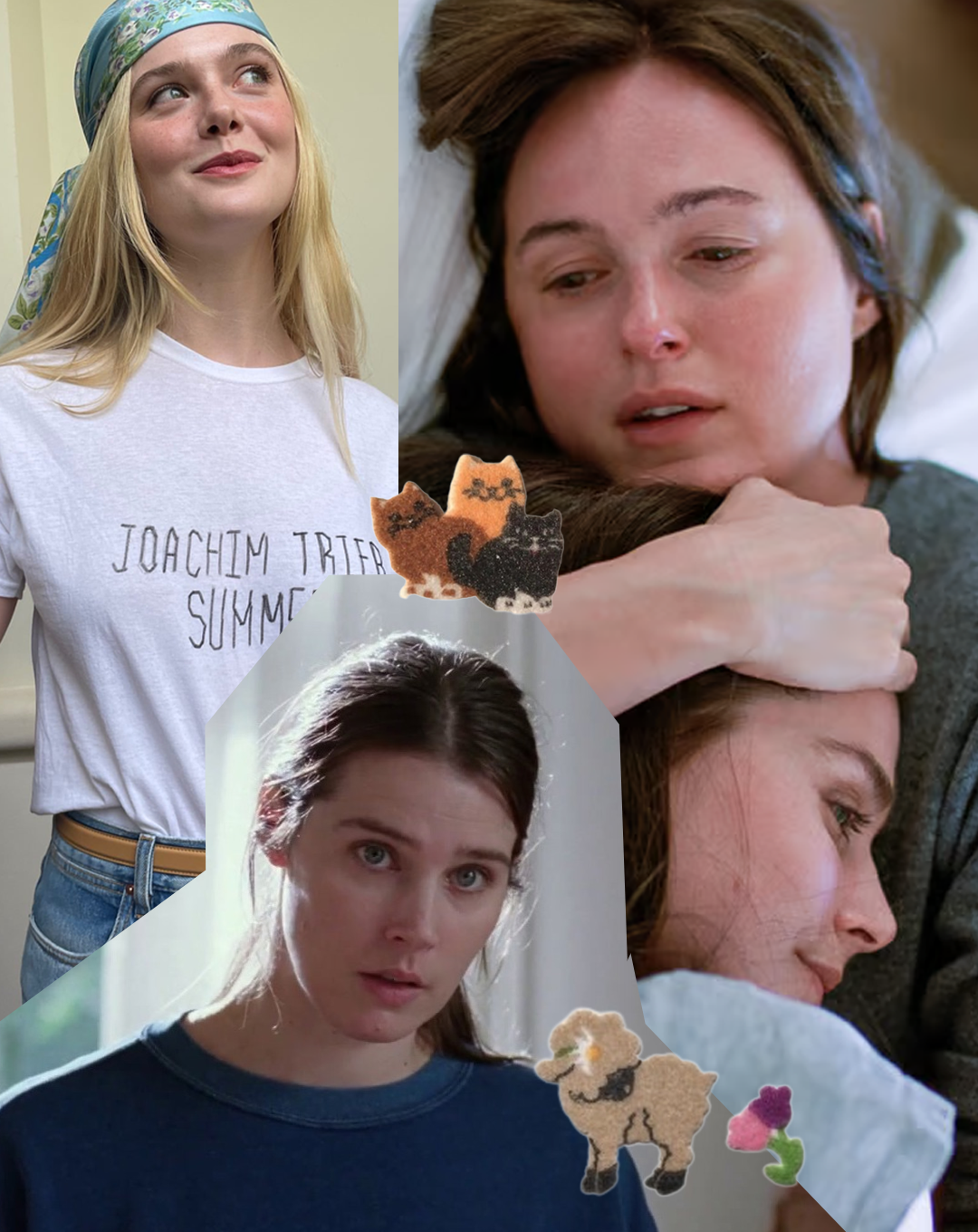Ellen Ystehede on Sentimental Value, Channelling Scandi Style and Collaborating with Joachim Trier
Words: Ella O’Gorman | Staff Creative: Jenn Lehwald
Tenderness is the new punk – or so says visionary Nordic filmmaker Joachim Trier, who coined the phrase at the 78th Cannes Film Festival earlier this year in reference to his existential, meditative and thoroughly melancholic directorial approach.
As the creative behind dressing his emotionally nuanced and oftentimes effusive characters Ellen Ystehede is a fundamental piece in Trier’s cinematic jigsaw. Their work together began with Oslo, August 31st (2011) and has continued right up to the present day with the release of the auteur’s hotly anticipated, Cannes Grand Prix-winning feature film, Sentimental Value (2025).
Co-written with Eskil Vogt, the film centres around themes of estrangement, vulnerability and reconciliation – and boasts a stellar cast featuring Renate Reinsve, Stellan Skarsgård and Elle Fanning. Ahead of the film’s theatrical release, Polyester spoke with the Norwegian costumer and CSM alum about all things design, analysing characters’ idiosyncrasies and the edification in finding a creative collaboration that just works.
What catalysed your decision to pursue a career in costume design?
I was lucky enough to be encouraged to follow my instincts. I established early on that I had a creative mindset, so I went to learn the craft of costume making and theatre design at Central Saint Martin’s. I think the pervasive fashion influence there inspired me, back in the glory days the library was constantly filled with illustrious designers! I had always been drawn in by fashion, cultural studies, history and anthropology. It turned out that costume design combined these interests perfectly for me.
I do also recall a major defining moment for me was watching a production of Peer Gynt by the director Ole Anders Tandberg, with costume designer Maria Geber and set designer Erlend Birkeland. Erlend often did both costume and set design, as is more common in theatre. Since I studied these things, I went straight ahead and asked him if he needed an assistant, and thankfully, he did! I assisted him for many years and then pivoted further into the costume design field. Maria Geber and Erlend Birkeland are still my heroes.
What are your biggest sartorial inspirations within both the fashion and film industries?
I love to keep up with the latest fashion shows and to see what’s “new”. Especially now that fashion, art and performance are converging in such interesting ways. My biggest style inspirations when working with Joachim Trier are derived more from people in general. Whether it’s what they’re wearing in the park, on the bus or out and about. And I obviously look to films, particularly French and Italian classics – they often have the most beautiful tailoring!
Describe your creative process with Joachim Trier. How did you both meet? In what ways has your work together evolved since shooting Oslo, August 31st?
I can’t recall when I first met Joachim. Oslo is like a big small town – we run in many of the same social circles and were familiar with each other's work, so collaborating felt natural. It’s funny, we actually rarely speak about costumes or clothing in our meetings. We prefer to discuss what kind of people the characters are, their intentions, and where their interests lie. On our first film, Oslo, August 31st, we understood each other easily, as I was well versed in the Oslo environment he sought to create. Our process hasn’t really changed since. Although now, I can evaluate how he feels by just looking at his expression. It’s usually polite yet decisive – I can always tell by it if he approves of my costuming choices.
When you are preparing for a new project, how do you go about compiling moodboards and conceiving ideas for costume concepts?
I conduct a huge search. Sometimes I look for hours on end to source specific articles of clothing, or I resort to dying and re-constructing new ones. It’s exhilarating and exhausting in equal measure.
A lot of experimenting and failing follows – seeing what fits and what doesn’t suit the story’s needs or complement the cinematography. In terms of colours, it can be complicated; they can’t clash with the set. It’s like a giant puzzle – trying to coordinate it all together. The key questions I try to answer are: what kind of person is this, and how have they come into possession of this clothing? It has to be believable. I try to empathise with each character and make it as if they dressed themselves, that they were not given a costume to wear.
Joachim never restricts my creativity or dictates any labels or styles that I should refer to. As friends and collaborators, we have established a strong level of trust. For Sentimental Value, this freedom was amazing, as I could dress everyone exactly how I wanted. Luckily he was as pleased with the result as I was!
Renate Reinsve stars in both The Worst Person in the World and Sentimental Value, how was dressing her now that you’ve worked twice together?
The process was almost identical each time, actually; same director, same heroine. For Sentimental Value, her looks were a combination of borrowed items from both of our personal wardrobes and my storage space which is brimming with miscellaneous clothes. There were a few items from H&M and Zara, but both Renate and her character wore lots of luxurious garments too. We created this great contrast – because a girl like Nora would have had that kind of diverse range in her wardrobe.
I love that you strive to reflect the reality of contemporary women in your work. In Sentimental Value, Elle Fanning plays the role of an American actress. Did her wardrobe subsequently emulate a quintessentially Hollywood sartorial sense?
Elle’s character, Rachel, is a huge movie star in this film. I really wanted her to be dressed in looks from a major fashion house, as her character presumably would. Actresses don’t necessarily wear Louis Vuitton all the time, but they often have contracts with fashion labels and are dressed by them. It translates to real life, like how Renate has a fantastic wardrobe now. She wasn’t that famous when we filmed TWPITW, but I have witnessed her public transformation firsthand and how brands have reacted to that. I wanted Rachel to exude that same star quality and to project that sense of professionalism, so that she looked like she was sponsored.
In the movie there’s an interesting juxtaposition between Rachel’s on and off-screen personas. Ironically, Elle is acting as an actress who is also acting as someone who is off duty. The goal was for her to be dressed down in more private and introspective moments and to wear the labels when she’s out being this fabulous star.
What did the delegation process between those big fashion houses look like? How did their designs fit into your vision?
We managed to get both Saint Laurent and Chanel to provide costumes. It was wonderful as it can boost sales by having great labels on the credits and it's unusual to have two rival fashion houses participate like that. I gave them my moodboards and then they generously provided me with some really gorgeous looks. Being allowed to select specific pieces was such an enjoyable experience. There seems to be an increased interest in maximising a fashion brand’s potential across the creative industries and that’s really inspiring to work with.
Do you think, in a similar vein to Copenhagen, that the people within Oslo have a distinct style sense?
Yes, there is a specific, niche way of dressing here that I'm trying to nail. I like to think that I can confidently distinguish the difference between us, the Swedes and the Danes. This idiosyncratic Norwegian style sense – or lack thereof – is what really piques my curiosity. There is this notion that the Danes are cooler, trendier and edgier, and we are slightly more mainstream and traditional. But times and styles are constantly changing, with the world becoming increasingly culturally diverse and the same high street labels being distributed globally. It is much more difficult now to observe and detect a nationality based solely on their style.
What are your favourite aspects of the job, what motivates and excites you?
As a curious person, I relish the opportunity to observe who people are, how they perceive the world and in which way they dress. I love discovering each character and communicating their fictional lives through clothes. I do a lot of commercials too, which is a completely different way of working, but there is still that element of seeing how people live and how they fit into the world. Even if it’s perceiving people in the smallest of houses or the back room of a corner shop.
What do you hope the future will hold for you, Ellen? What are your aspirations moving forward?
I plan to keep contributing meaningful costumes to films. I want to craft more costumes myself and create more original designs through sketching and tailoring. I don’t wish to always run out to buy clothes, alter items or source them secondhand. In Sentimental Value, we actually did have some dresses custom-made for Nora (Reinsve), worn when her character performs on stage. They are the most divine dresses – one in black, the other in white – they looked fantastic. But of course, budget is still a huge factor in getting things made myself ... I can only hope that they will improve!
What has been your favourite project to work on to date and why?
Sentimental Value must be the greatest. It had it all; detailed theater design, tailored costumes, in-depth historical research, casual Oslo style, haute couture and a fantastic crew and cast!


